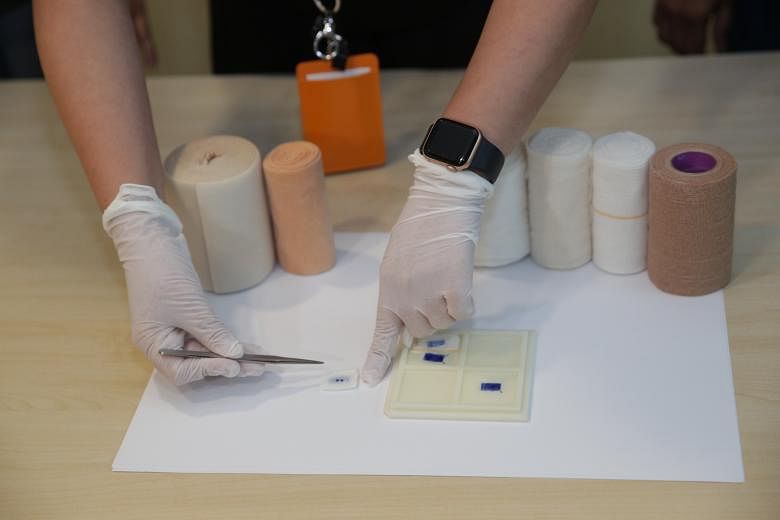SINGAPORE - More training and innovation are being lined up to ensure better treatment for elderly patients with chronic wounds such as bed sores and diabetic foot ulcers.
Wounds like these can lead to longer hospital stays, putting a strain on healthcare resources, a study has found.
It noted that the average confinement in hospital for each wound episode was 17.7 days, 2.4 times that of the average length of stay in Tan Tock Seng Hospital (TTSH).
Patients with diabetic foot ulcers had to stay an average of 15.8 days in the hospital while those with bed sores were there for 18.6 days, noted the study conducted between 2013 and 2017 and carried out by TTSH in collaboration with the Skin Research Institute of Singapore's (SRIS) Wound Care Innovation for the Tropics programme.
An initiative to tackle this is under way with the signing of a memorandum of understanding (MOU) between the TTSH Centre for Asian Nursing Studies and the SRIS, which is a tripartite partnership between the Agency for Science, Technology and Research (A*Star), the National Healthcare Group and Nanyang Technological University, on Wednesday (April 14).
"With Singapore's ageing population, by 2030, one in four will be over 65, so... there will be more people with chronic wounds. With this MOU, we will try to look for innovations and improve the wound outcome in Singapore," said Dr Ng Yizhen, programme manager (Wound Care Innovation for the Tropics programme), SRIS.
The collaboration will see more training opportunities for nurses in polyclinics and community health nurses, who visit patients in their homes to help them manage chronic conditions.
TTSH nurse clinician Sivakami Muthuveerappa said this could allow for early and timely intervention without requiring the patient to return to the hospital for treatment.
For instance, treating patients with venous leg ulcers, which are slow-healing sores due to poor blood circulation in the leg, requires compression bandages.
"This requires the nurse to be skilled, as the pressure applied to the patient must be at an optimal level. If it's too high, the patient is at risk of losing the limb, and if it's too low, the wound might not heal fast enough," she said.
More innovation for products that could aid wound healing are also in the pipeline.
For instance, a disposable pressure sensor was developed for patients with venous leg ulcers by the SRIS, A*Star's Institute of Materials Research and Engineering and TTSH to ensure that optimal pressure is delivered in compression bandages.
The device, which resembles a "micro-bubble wrap", is made of a thin, multi-layer film consisting of an array of micron-sized chambers, each filled with a dye solution.
Upon compression, the micro-chambers will rupture and release a dye to indicate that sufficient pressure has been achieved.
This can also be useful in training nurses to apply the correct amount of pressure for the patient, said Dr Ng.
The product prototype is moving into its development stage to scale up for manufacturing, and it will likely be ready in three years, she added.


